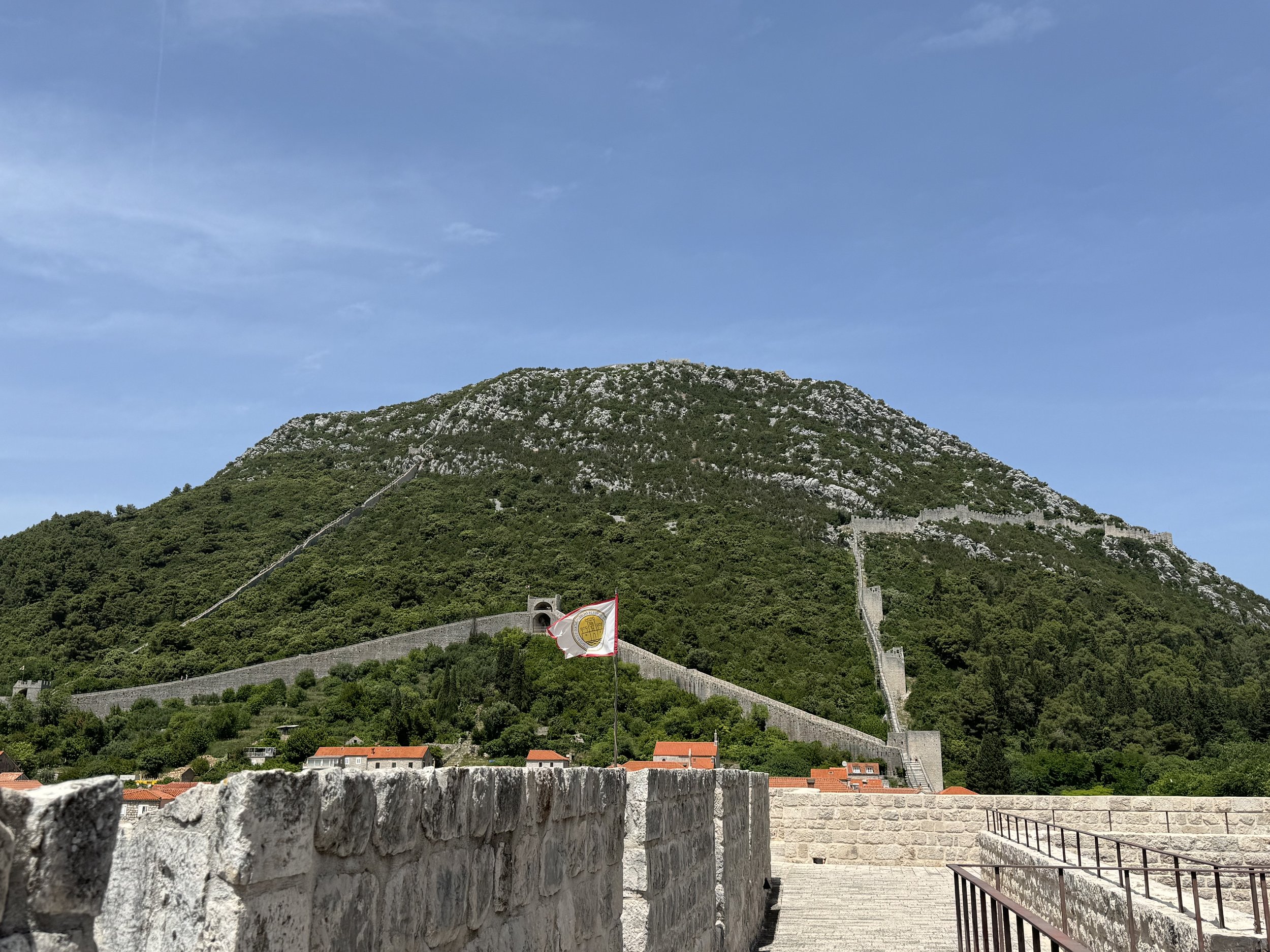Drive through the Peljesac Peninsula - famous for wine, oysters and mussels (sold at stands by the side of the road or in eateries for just over $1.50 a pop).
On the way to the Korcula ferry, a stop in the village of Ston.
The village was settled prior to 167 BC when the Romans arrived. The original old town was on the hillsides but completely demolished by earthquake in 1252 then rebuilt in its current spot.
Ston has the second longest defensive walls after China! Originally it was almost 4.5 miles long (encircling the hill behind the village with 40 towers. Today you can walk 3.5 miles of the wall and see 20 of the original towers. Start in Ston, go up the hill to the fortress on top, then around the other side to the smaller village of Mali Ston.
Lower fortress with a moat!
Village of Mali Ston is on the other side of the hill - connected by the wall.
Back in Roman times is when salt collecting started at Ston. The salt pans there are the oldest in Europe and best preserved - still in use today.
There are 58 pools that are divided into 5 groups because the process has 5 stages and takes 1-2 months. Gates are opened then closed to let sea water in and basically becomes a process of evaporation that produces about 500 tons of salt a year.
Trivia: 8 of the 9 crystallization pools are named after saints - the other is Mundo, informally meaning ‘people’ as in older days the salt from that pan was given to the poor who couldn’t afford salt.
Salt is hand shovelled into the cars to be transported.
Walking the walls …
Church of St David - part of the monastery - some tombs inside the church ‘to be closer to God’.













